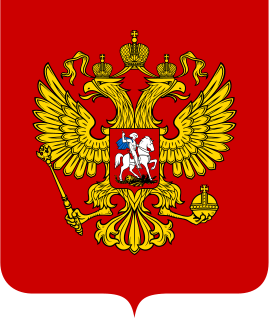
A treaty is a formal, legally binding written agreement between actors in international law. It is usually entered into by sovereign states and international organizations, but can sometimes include individuals, business entities, and other Legal persons. A treaty may also be known as an international agreement, protocol, covenant, convention, pact, or exchange of letters, among other terms. Regardless of terminology, only instruments that are legally binding upon the parties are considered treaties pursuant to, and governed by, international law.

The Vienna Convention on Diplomatic Relations of 1961 is an international treaty that defines a framework for diplomatic relations between independent countries. It specifies the privileges of a diplomatic mission that enable diplomats to perform their function without fear of coercion or harassment by the host country. This forms the legal basis for diplomatic immunity. Its articles are considered a cornerstone of modern international relations. As of June 2020, it has been ratified by 193 states.
The Protocol for the Prohibition of the Use in War of Asphyxiating, Poisonous or other Gases, and of Bacteriological Methods of Warfare, usually called the Geneva Protocol, is a treaty prohibiting the use of chemical and biological weapons in international armed conflicts. It was signed at Geneva on 17 June 1925 and entered into force on 8 February 1928. It was registered in League of Nations Treaty Series on 7 September 1929. The Geneva Protocol is a protocol to the Convention for the Supervision of the International Trade in Arms and Ammunition and in Implements of War signed on the same date, and followed the Hague Conventions of 1899 and 1907.

The International Covenant on Civil and Political Rights (ICCPR) is a multilateral treaty adopted by United Nations General Assembly Resolution 2200A (XXI) on 16 December 1966, and in force from 23 March 1976 in accordance with Article 49 of the covenant. Article 49 allowed that the covenant would enter into force three months after the date of the deposit of the thirty-fifth instrument of ratification or accession. The covenant commits its parties to respect the civil and political rights of individuals, including the right to life, freedom of religion, freedom of speech, freedom of assembly, electoral rights and rights to due process and a fair trial. As of September 2019, the Covenant has 173 parties and six more signatories without ratification. Notable holdouts are People's Republic of China and Cuba. North Korea tried to withdraw.
Succession of states is a theory and practice in international relations regarding successor states. A successor state is a sovereign state over a territory and populace that was previously under the sovereignty of another state. The theory has its roots in 19th-century diplomacy. A successor state often acquires a new international legal personality, which is distinct from a continuing state, also known as a continuator, which despite change to its borders retains the same legal personality and possess all its existing rights and obligations.

The Vienna Convention on the Law of Treaties (VCLT) is an international agreement regulating treaties between states. Known as the "treaty on treaties", it establishes comprehensive rules, procedures, and guidelines for how treaties are defined, drafted, amended, interpreted, and generally operated. An international treaty is a written agreement between international law subjects reflecting their consent to the creation, alteration, or termination of their rights and obligations. The VCLT is considered a codification of customary international law and state practice concerning treaties.

The American Convention on Human Rights, also known as the Pact of San José, is an international human rights instrument. It was adopted by many countries in the Western Hemisphere in San José, Costa Rica, on 22 November 1969. It came into force after the eleventh instrument of ratification was deposited on 18 July 1978.
Ratification is a principal's approval of an act of its agent that lacked the authority to bind the principal legally. Ratification defines the international act in which a state indicates its consent to be bound to a treaty if the parties intended to show their consent by such an act. In the case of bilateral treaties, ratification is usually accomplished by exchanging the requisite instruments, and in the case of multilateral treaties, the usual procedure is for the depositary to collect the ratifications of all states, keeping all parties informed of the situation.
Customary international law is an aspect of international law involving the principle of custom. Along with general principles of law and treaties, custom is considered by the International Court of Justice, jurists, the United Nations, and its member states to be among the primary sources of international law.

The Russian Federation succeeded the Soviet Union's seat, including its permanent membership on the Security Council in the United Nations after the dissolution of the Soviet Union in 1991, which originally co-founded the UN in 1945. The succession was supported by the USSR's former members and was not objected to by the UN membership; Russia accounted for about half the Soviet Union's economy and the majority of its people and land mass; in addition, the history of the Soviet Union began in Russia. If there was to be a successor to the Soviet seat on the Security Council among the former Soviet republics, these factors made Russia seem like a logical choice. Nonetheless, due to the rather inflexible wording of the United Nations Charter and its lack of provision for succession, the succession's technical legality has been questioned by some international lawyers.
International law also known as "law of nations" is the name of a body of rules which regulate the conduct of sovereign states in their relations with one another. Sources of international law include treaties, international customs, general widely recognized principles of law, the decisions of national and lower courts, and scholarly writings. They are the materials and processes out of which the rules and principles regulating the international community are developed. They have been influenced by a range of political and legal theories.
A reservation in international law is a caveat to a state's acceptance of a treaty. A reservation is defined by the 1969 Vienna Convention on the Law of Treaties (VCLT) as:
a unilateral statement, however phrased or named, made by a State, when signing, ratifying, accepting, approving or acceding to a treaty, whereby it purports to exclude or to modify the legal effect of certain provisions of the treaty in their application to that State.
A multilateral treaty is a treaty to which three or more sovereign states are parties. Each party owes the same obligations to all other parties, except to the extent that they have stated reservations. Examples of multilateral treaties include the Convention Relating to the Status of Refugees, the United Nations Convention on the Law of the Sea, the Geneva Conventions, and the Rome Statute of the International Criminal Court.
A bilateral treaty is a treaty strictly between two state entities. It is an agreement made by negotiations between two parties, established in writing and signed by representatives of the parties. Treaties can span in substance and complexity, regarding a wide variety of matters, such as territorial boundaries, trade and commerce, political alliances, and more. The agreement is usually then ratified by the lawmaking authority of each party or organization. Any agreement with more than two parties is a multilateral treaty. Similar to a contract, it is also called a contractual treaty. As with any other treaty, it is a written agreement that is typically formal and binding in nature.

The Treaty Clause is part of Article II, Section 2, Clause 2 of the United States Constitution that empowers the President of the United States to propose and chiefly negotiate agreements between the United States and other countries, which, upon receiving the advice and consent of a two-thirds supermajority vote of the United States Senate, become binding with the force of federal law.

The Convention on the Rights of Persons with Disabilities is an international human rights treaty of the United Nations intended to protect the rights and dignity of persons with disabilities. Parties to the Convention are required to promote, protect, and ensure the full enjoyment of human rights by persons with disabilities and ensure that persons with disabilities enjoy full equality under the law. The Convention serves as a major catalyst in the global disability rights movement enabling a shift from viewing persons with disabilities as objects of charity, medical treatment and social protection towards viewing them as full and equal members of society, with human rights. The Convention was the first U.N. human rights treaty of the twenty-first century.

The Manila Accord was signed on 31 July 1963 by the Federation of Malaya, the Republic of Indonesia and the Republic of the Philippines, after a meeting from 7 to 11 June 1963 in Manila.

The Hague Convention on the International Recovery of Child Support and Other Forms of Family Maintenance, also referred to as the Hague Maintenance Convention or the Hague Child Support Convention is a multilateral treaty governing the enforcement of judicial decisions regarding child support extraterritorially. It is one of a number of conventions in the area of private international law of the Hague Conference on Private International Law in 2007. The convention is open to all states as well as to Regional Economic Integration Organizations as long as they are composed of sovereign states only and have sovereignty in the content of the convention. The convention entered into force on 1 January 2013 between Norway and Albania, with Bosnia-Herzegovina (2013), Ukraine (2013), the European Union, Montenegro (2017), United States (2017), Turkey (2017), Kazakhstan (2017), Brazil (2017), Honduras (2017), Belarus (2018), Guyana (2020), Nicaragua (2020), United Kingdom (2021) and Serbia(2021) following suit. Because the EU acceptance of the convention applies in 27 EU countries, the convention applies in 41 countries worldwide.











